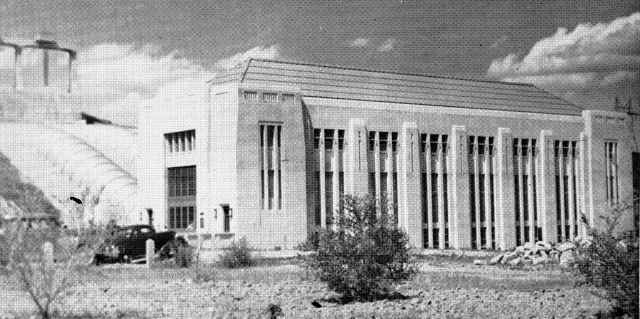
NEGenWeb Project
Resource Center
On-Line Library
| Power | 403 |
At that time, total sales, averaged 256,782,627 kilowatt hours, with revenues totaling $1,339,342. In the biggest test area of the entire system, Columbus, rates were reduced twenty-two thousand dollars annually in the first two years of public operation. Consumers' officials claim to have cut rates about four hundred thousand dollars a year in all its divisions.
Consumers' policy in each community was to investigate local buildings with the objective of either purchasing or remodeling offices to serve as headquarters in the various municipalities serviced by the system. In spite of the fact that the type of revenue bond issued by the public power district was relatively new on the American investing market, Treasurer C. C. Sheldon led the program of introducing it to large insurance companies and trustees of funds.
Consumers' democratic public relations policy was indicated by the fact that in those communities served at retail by the public power system, the citizens had a right to vote on the directors and could thereby maintain a voice in the management. Moreover, the communities retain the same rights under Consumers' ownership that they had under private ownership the right to purchase or acquire by condemnation.
Upon the retirement of the revenue bonds, the public becomes the owner of the property. Each community, if it desires, may have a deed to its electric system for the sum of one dollar after the loans have been repaid.
In the past referred to as the "Little TVA," the Consumers Public Power District differs from the Tennessee Valley project in that it was organized locally by the people whom it served. Phil Hockenberger and Charles B. Fricke, the first president of the district, were leaders in the original move to provide the state-wide system for distribution of electricity.
C. C. Sheldon was the treasurer and a director of Consumers. Clarence Sheldon manipulated many of the financial transactions involving the system, provided for interest rates no higher than three and a half percent on bond issues (although the yield to the district is sometimes ninety-five to ninety-seven percent of the face amount, due to the discounts allowed underwriting bankers).
Up until May, 1949, the general manager of Consumers was V. M. Johnson, a native Nebraskan who attended Dana College and began his business career in a Blair bank. Johnson first entered the public utilities field in 1915, when he went to work for the Grand Island Electric Company as secretary to the president. Closely associated with the management, operation and accounting activities of the company, he was advanced to auditor and later to treasurer. From 1924 to 1931, he served as secretary of the firm, becoming vice president of the Central Power Company after a few years. In 1937, he was made president of the latter concern, a subsidiary of the holding company which owned Grand Island Electric.
When Consumers purchased the Central Power Company properties in 1941, it absorbed the general office staff of the firm and V. M. Johnson was made general manager of the public power organization. He remained in that position, working to integrate the fourteen additional companies which were purchased by the system to augment its state-wide coverage.
C. W. Prentice of Columbus became statistician for the district and J. W. Andersen joined the staff as rate analyst for the Consumers area. The Columbus office was managed by James L. Rich. Members of the boards of directors were chosen by popular vote on non-partisan tickets for staggered six-year terms. A district does not have fewer than five directors. The latter were reimbursed for expenses and paid six dollars per day for time devoted to official business.
Although the actual acquisition of most of the properties there owned by Consumers took place over a span of relatively few years, the hydro-power projects had been a topic of statewide interest for a much longer period. United States Senator George W. Norris, father of the TVA, had been a proponent of development of the Loup and Platte Rivers and advocated the public control of the power selling functions.
The Consumers District was continually increasing its business, as was evidenced in the steadily growing power load carried on its thousands of miles of transmission lines. Although it was thought that, with the end of World War II and the shutting down of war plants, power sales would drop, this was not the case. Sales in 1945 actually represented an increase over the 1942 figure, and every type of electric user was up, including municipalities, industrials, residential and rural customers. The field of residential users, where new electrical appliances are on the increase, shows the largest rise.
Under the GI Bill of Rights, many veterans of the second world war were added to the operating staff and given an indoctrination in public utilities. Construction, expansion, and the extension of additional service particularly throughout the Western System-was
| 404 | The History of Platte County Nebraska |

The Columbus Power House
undertaken by Consumers during the postwar years;
For a better understanding of the scope of the system it was necessary only to consider the maze of holding companies that Consumers supplanted. In the case of the Iowa-Nebraska Light and Power Company, this firm was owned by the Continental Gas and Electric Corporation, which in turn was owned by the United Light and Railways Company. The latter was owned by the United Light and Power Company, part of which was owned by Koppers Gas and Coke Company, under the Koppers Company of Delaware. However, another part of United Light and Power was owned by Lee and Company. This faction was connected with the Lehigh Coal and Navigation Company, which, in turn, was partially owned by the National Power and Light Company. The National Power and Light Company was owned in part by Electric Bond and Share, one of the key holding companies for all public utilities in America.
Under state law, Consumers paid, in lieu of taxes, an amount equal to the sum paid by the private company before it was purchased. Wherever possible, Consumers retained the employees of the company it absorbed, steadfastly refusing to pay any one executive more than ten thousand dollars per year. Only the general manager even approximated that figure and the organizational structure of Consumers was carefully arranged so that there would be no overlapping of personnel, such as frequently occurred with a multiple-agency operation.
Moreover, there were natural advantages in the engineering facilities afforded by the "Little TVA." Hydraulic engineers calculated that once the reservoir behind Kingsley Dam was filled, a continuous flow of water could be maintained downstream, despite the fact that almost invariably the Platte River tended to dry up in midsummer. To counteract the great amount of silt carried in the waters of the Loup River, engineers built a long settling basin in the canal just below the point where the river water was diverted.
Still another facet of the power program in Platte County was the organization known as the Cornhusker Rural Public Power District, responsible for distribution of electricity among farms in the area. On May 6, 1936, the Rural Electrification Administration announced an allotment of $391,000 to the Loup River Public Power District for the construction of three hundred fifty-five miles of electric lines, estimated to reach eight hundred fifteen customers. The initial rate was established as three and a half dollars for the first forty kilowatts of power.
It was May, 1938, when electric power flowed into Platte County farmers' homes and the rural lines began operation. More than fourteen hundred farms in Platte, Colfax, Nance, and Boone Counties received electric power from Cornhusker lines, with an average of one hundred kilowatt hours usage monthly.
| Power | 405 |
Formally created on January 2, 1943, the Cornhusker Rural Public Power District was prepared to greatly expand its original facilities. Manager of the project was Wesley M. Schutz and Guy S. Bowman of Albion was president. Other officers were: James I. Clark of St. Edward, vice president; B. J. Novotny of Clarkson, secretary; and Walter L. Loseke of Columbus, treasurer.
In addition to the aforementioned, the board of directors was composed of: B. H. Hutchinson of Albion, John B. Preston of Humphrey, Robert Shonka of Schuyler and Willis G. Bell of Fullerton. Headquarters of the Cornhusker organization was located in the Loup District Building in Columbus.
The vast power kingdom centering in Columbus today is the engineering and economic answer to the harnessing of the natural resources, provided the inhabitants of Platte County and the rest of Nebraska. The Platte River and its unruly upper tributaries, and the Loup with its low banks, provided many technical problems in the planning of the overall project. In all, the work of producing and distributing cheap public power through municipal systems and rural cooperatives in the state represented a gargantuan scheme which had been many years in unfolding and required the joint efforts of more than one community.
Previous to the public power development, Nebraska was more at a disadvantage for fuel for power production than any other state between the Mississippi River and the Rocky Mountains. Fuel was shipped in from adjoining states in the form of natural gas, piped in from the huge fields of Texas, and coal shipped from Wyoming, Pennsylvania and Illinois. The Loup and Consumers projects changed that. In 1949, Columbus and Nebraska were as wealthy in terms of publicly generated and distributed power as any area in the United States.
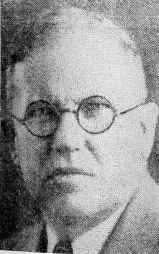 |
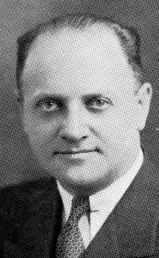 |
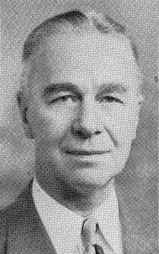 |
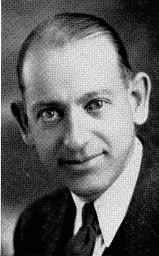 |
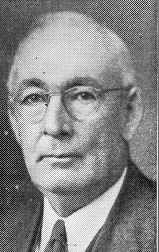 |
Charles B. Fricke |
Harold Kramer |
Philip R. Hockenberger |
Doctor Julian E. Meyer |
C. C. Sheldon |
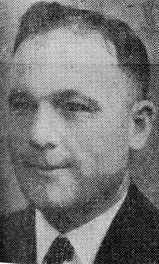 |
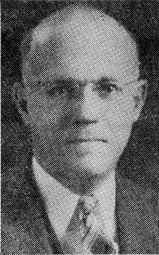 |
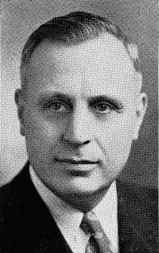 |
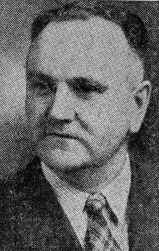 |
V. M. Johnson |
Fred Albert |
Dewey J. DeBoer |
Edd Kelly |
| © 2005 for the NEGenWeb Project by Ted & Carole Miller |
|||